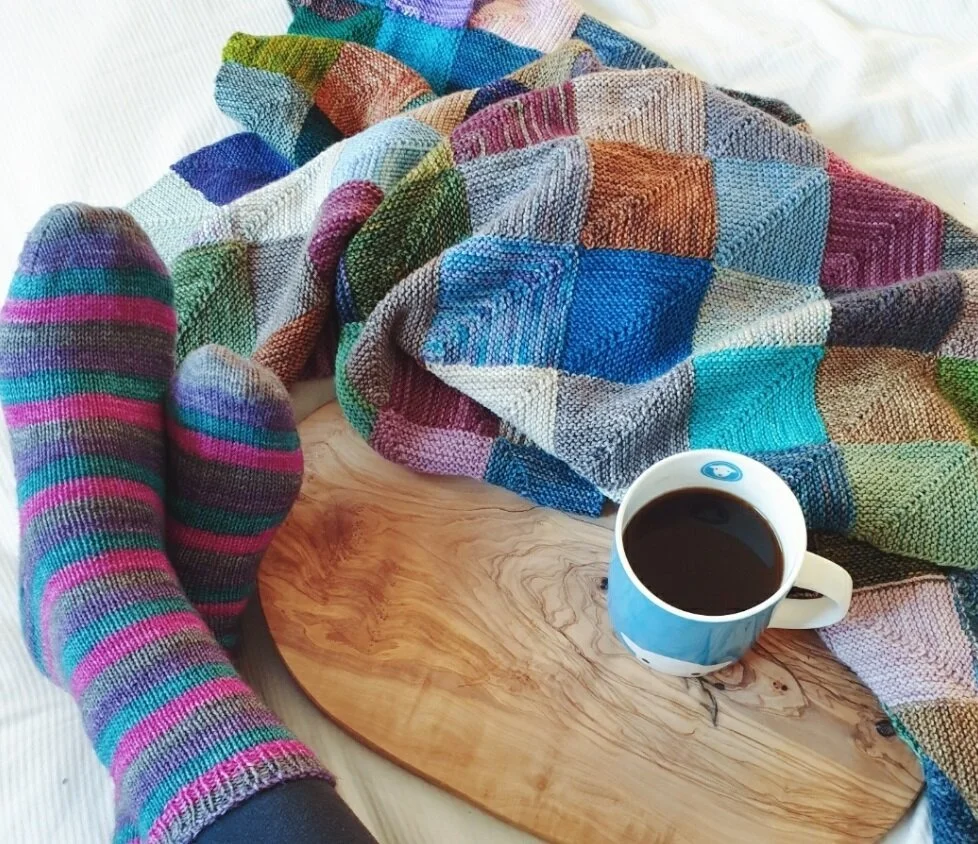A mitered square over an even number of stitches (left) vs one with an odd number (right)
Everyone loves the look of a mitered square blanket but one of the most common questions is around which decrease to use to create the distinctive mitered square look.
There are several different options available for how to knit a mitered square but they fall into two camps - those worked over an even number of stitches and those that use an odd number.
Even number of stitches: These have a marker at the centre point and an even number of stitches either side (32 sts in total in my example above). On each RS row the square is worked:
K to 2 sts before m, ssk, sm, k2tog, K to end.
The WS row is knit all the way across.
This creates a fairly broad ridge up the centre of the mitered square. It’s simple and easy to remember but some people are looking for a narrower, more defined ‘spine’ to their work.
Odd number of stitches: These squares have a central marked stitch with an even number of stitches on either side of that stitch. In my example above the 2 sides have 16 sts, with a central stitch (33 in total).
In this case the spine is formed by creating a central double decrease (CDD) - decreasing by 2 sts at the central point:
K to 1 st before central marked st, sl 1, k2tog, pass slipped st over the k2tog just worked (psso), K to end.
There are number of different ways to work a CDD - I have just given one option here - but the principle is always the same. You knit to 1 st before the central stitch then do a double decrease.
It gives a neat, defined line up the centre of the stitch which some people prefer.
I love the look of the CDD but I have an irrational dislike of actually carrying out the decrease itself. It’s always advisable to mark the central stitch in some way (I use a little bulb pin) but every time you do the CDD you need to move the marker up to make sure you do the CDD in the correct place on the next RS row.
Every time that I get lazy and think I’ll remember where the CDD goes - I forget. It’s OK when you are paying close attention but it only takes a momentary lapse and suddenly your nice straight spine looks more like a dogs hind leg.
For this reason |I always prefer to do my mitered squares over an even number of stitches - you always know where you are with a paired ssk/k2tog decrease.
But, as with everything it’s worth experimenting and seeing which decrease you prefer. Do you have a favourite? Let me know in the comments below.
OTHER BLOG POSTS YOU MIGHT LIKE:







